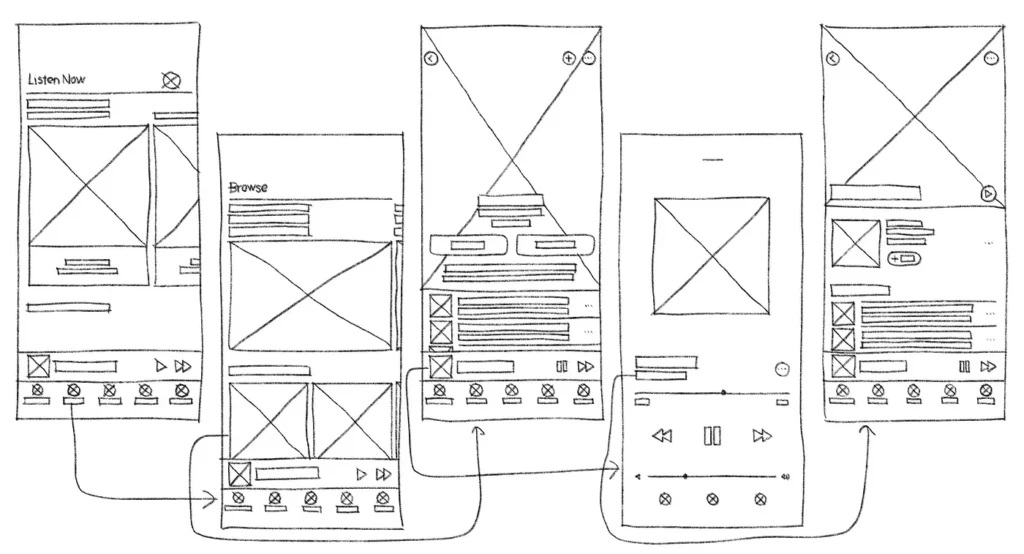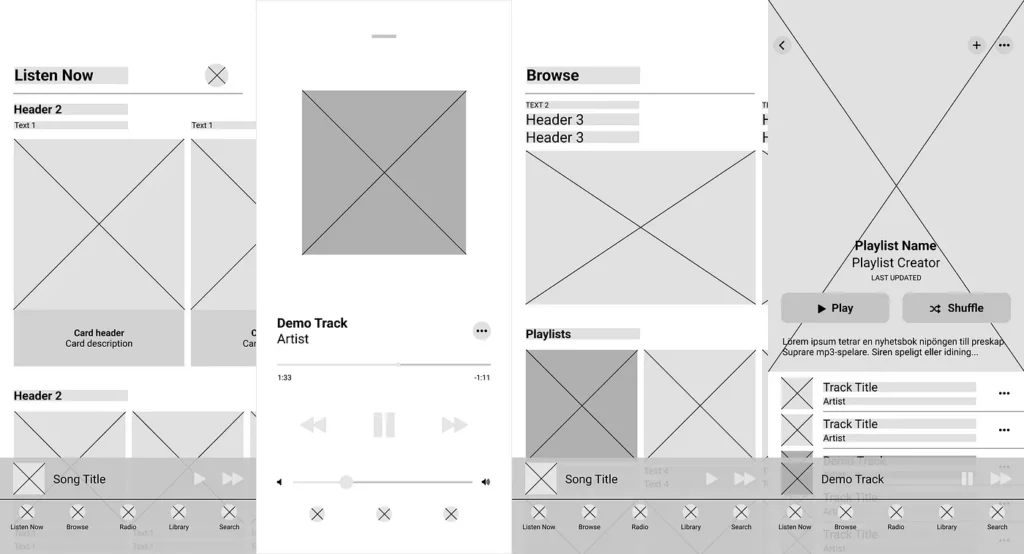Case Study: Apple Music – Redesigning the Mobile Experience
https://apps.apple.com/us/app/apple-music/id1108187390
Project Overview:
Apple Music, launched in 2015, is Apple’s subscription-based music streaming service. The goal of this redesign was to improve the user experience of the app across platforms (iOS, macOS, etc.) by addressing pain points related to user navigation, personalization, and overall ease of use. Apple wanted to create a seamless, intuitive interface that makes it easy for users to discover music, create playlists, and access personalized recommendations.
Challenges:
- Cluttered User Interface: Apple Music’s original UI was criticized for being overwhelming and difficult to navigate, especially for new users. The app had multiple sections (Library, For You, Browse, Radio), and users had trouble finding the features they used most often.
- Poor Personalization: Despite having a vast library of music, users found it challenging to discover new music that suited their tastes. Personalization felt disconnected and did not always match the user’s preferences.
- Streamlining Onboarding: The onboarding experience was initially too complex, with too many options for users to choose from, which led to a high abandonment rate for first-time users.
- Integration with Existing Apple Ecosystem: Apple Music needed to work seamlessly with other Apple services like iCloud, iTunes, and Siri, but users sometimes struggled with syncing music across devices.
Approach:
- User Research:
- Surveys & Interviews: Apple conducted qualitative research by interviewing both existing and potential users. They also gathered insights from Apple Music subscribers and non-subscribers to understand the pain points related to the navigation, playlist creation, and music discovery.
- Analytics Review: Data from the app was also analyzed to see where users were dropping off, which features they were using the most, and where they were facing friction.
- Refined Onboarding Experience:
- Simplified First-Time Experience: The redesigned onboarding experience focused on allowing users to quickly personalize their music preferences by selecting favorite genres and artists. It was a much shorter and clearer process, aimed at minimizing friction.
- Free Trial with Seamless Signup: The sign-up process was streamlined with a focus on quick conversion, offering users a free trial while clearly explaining the benefits of the paid version.
- Improved Personalization with Curated Content:
- “For You” Tab Revamp: The “For You” section became more personalized by using machine learning and algorithmic recommendations based on the user’s listening habits. Instead of generic suggestions, the recommendations were tuned to the user’s specific tastes in music, albums, and genres.
- Human-Curated Playlists: In addition to algorithmic suggestions, Apple Music integrated human-curated playlists, blending machine intelligence with expert curation. This helped users discover music through both personal and professional recommendations.
- Visual Redesign:
- Cleaner, More Consistent Layout: Apple Music adopted a more visually streamlined design, with a focus on larger album artwork, more consistent use of typography, and clear visual hierarchies to reduce clutter.
- Emphasis on Playlists and Albums: The focus shifted towards a more intuitive music discovery experience, with curated playlists highlighted front and center, making it easier for users to explore new music without feeling overwhelmed.
- Integrated Apple Ecosystem:
- iCloud & iTunes Syncing: To ensure smooth integration with the Apple ecosystem, Apple Music was fully synchronized with the user’s iCloud music library, allowing access to all music from multiple devices seamlessly.
- Siri Integration: Siri was better integrated to allow hands-free control over the app, making it easier for users to find and play music just by using their voice.
- Refined Navigation:
- Simplified Navigation: The app’s tab bar was reorganized to reduce clutter and improve the flow between key sections: Library, For You, Browse, and Radio. This helped users get to their desired destination faster.
- Search Enhancement: The search function was redesigned to be more intuitive. Users could now easily filter results by artist, song, album, and genre, with a smooth transition from browsing to listening.
Outcomes:
- Increased Engagement:
- The redesigned app saw increased engagement metrics, with more users discovering new music and interacting with personalized playlists.
- The “For You” tab saw higher click-through rates, leading to more music being discovered by users based on their preferences.
- Higher Retention:
- The onboarding process became much easier to follow, leading to a higher retention rate, especially for first-time users.
- The smoother integration with iCloud and iTunes encouraged users to stay within the Apple ecosystem, reducing churn rates and increasing long-term subscription retention.
- Improved App Store Ratings:
- Post-redesign, Apple Music’s app received better reviews on the App Store, with users praising its cleaner interface, ease of navigation, and more accurate music recommendations.
- Cross-Platform Consistency:
- The consistency across iOS, macOS, and even Android (post-expansion) meant that users had a unified experience, making switching between devices effortless.
Lessons Learned:
- Personalization is Crucial: Making recommendations feel personal rather than generic can significantly increase user engagement. The balance between machine-learning-driven recommendations and human-curated lists helps bridge the gap between automation and curated tastes.
- Simplifying Onboarding Can Boost Retention: Reducing friction in the initial setup process encourages higher conversion rates and long-term retention.
- Clear and Intuitive Navigation is Key: A cluttered interface can overwhelm users, especially in a content-heavy app like Apple Music. Having a clean, well-structured layout with easy-to-find features (like playlists, search, and recommendations) is vital for a positive UX.
- Seamless Integration with Other Services Is a Major Advantage: Leveraging the broader Apple ecosystem to integrate iCloud, iTunes, and Siri created a cohesive experience for users, allowing them to access their music across devices effortlessly.
Prototype

